17 Reasons Why Your Hairpiece is Shedding and Proven Tips to Prevent It
Posted by Santana Fell on Feb 06, 2025
Hairpieces are fantastic, undetectable, natural-looking solutions for men and women who want to conceal areas of hair loss on their balding scalp. They enhance your appearance, boost your confidence, and make you look at least a decade younger. Now, who wouldn't want that?
It is no surprise then that the hair system industry is booming, with an increasing number of people choosing hair systems over expensive and painful hair transplants and promising hair treatments that don’t have instant or lasting results.
With a hair system for men or a woman’s hairpiece, you can instantly get the hair of your dreams and tailor it to perfection by getting it cut, styled, colored, or permed to match your natural hair or go in for a completely new look.
While human hairpieces are uniquely crafted with real human hair to give you the look and feel of your own hair, they need extra care and attention to keep them looking their best.
When not maintained well, one common issue that many hairpiece users face is hair shedding. Are you frustrated with your hairpiece shedding? You're not alone!
Shedding occurs when the knots are loose and/or the hair is damaged and breaks off. Hairpiece shedding can be a common issue with any hairpiece you use, irrespective of where you purchase it from. If you’ve noticed more hair than usual on your brush or stuck to your clothing, it’s essential to understand the reasons behind shedding and how to prevent it to ensure your human hairpiece remains in prime condition, prolongs its lifespan, and continues to be a stunning addition to your appearance with hair that looks full and healthy.
Don’t let hair shedding deter you from buying these fantastic human hair systems that can transform your appearance in a few minutes.
In this guide, we’ll explore the key reasons behind hairpiece shedding and share effective strategies on how to prevent hair system shedding, especially during the winter months when hair care requires extra attention.
Why Is My Hairpiece - Toupee or Wig Shedding?
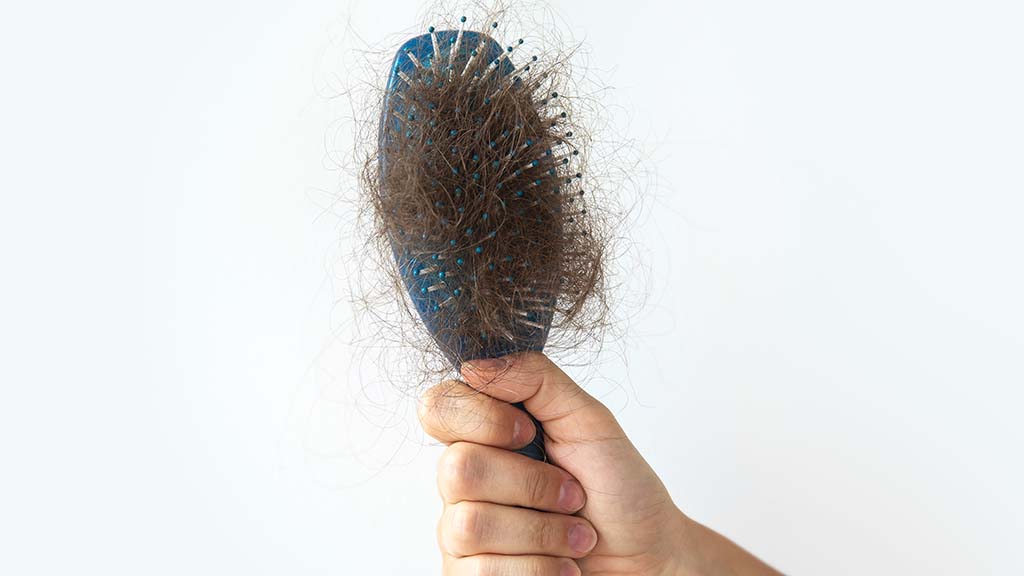
If you are wondering, ‘Why is the hair on my hair system falling out?’ We have answers.
Just like with natural hair, shedding is normal, even with hairpieces. However, there are times when you may notice that your particular hairpiece is shedding a lot more than usual or a lot more than expected. That is when you need to monitor your daily activities, habits, or what is causing hair shedding in your hair system.
Wigs and hair system shedding can occur for various reasons. Here are 17 of the most common reasons and tips to avoid shedding on hair systems
1. Hair System Base
The type of hair system base you use could be a significant factor behind the excess hair shedding on your hairpiece.
Skin bases are the thinnest and most natural-looking units, but unfortunately, some of them are disposable units. These delicate hair systems are generally handcrafted with v-looped ventilation for a sleek, undetectable hairline and scalp-like finish, which makes the hair prone to shedding if not maintained well.
Pro tips: Remember not to be rough with these hair systems. Don’t pull or tug at the hair strands; brush them gently, and avoid touching the hair on your v-loop skin base immediately after a shower.
The common cause of hair shedding on lace bases is water and oil damage. Water or oil—whether from a product or your scalp—expands the tiny holes on the lace, causing the knots in the base to loosen, resulting in it slipping away and falling.
Pro tips: Avoid soaking your hair system in water. Do not use silicone-based shampoos and conditioners near the roots; always use a scalp protector. Also, remove and clean your unit regularly, replace the tape, and keep a clean scalp.
When it comes to mono bases, the damage mostly comes from friction between the hair strands and the base material. The monofilament fibers, while durable, can damage the hair when subjected to constant rubbing or pulling. This friction weakens the hair's foundation, increasing shedding over time.
Pro tips: To reduce this issue, handle your mono hair system gently; avoid vigorous brushing and instead use a wide-toothed comb to detangle the hair. Additionally, consider using a silk or satin pillowcase when you sleep to minimize friction and protect the hair from unnecessary wear and tear during the night.
When you sleep with a full-cap wig on, shedding can occur easily. Unlike toupees, which you can easily sleep with, full-cap wigs can be damaged in a matter of a few nights if you choose to sleep with them on.
Pro tip: Since these hairpieces are easily removable, consider taking them off at night and keeping them on a wig stand to maintain their shape and texture while avoiding matting, tangling, and hair shedding.
There are several reasons for hair fall with women's hairpieces. These can range from chemical agents such as perms, dyeing, or coloring to sleeping while the hair is wet, leading to tangling and damage, or the wrong way of applying heat.
Pro tip: You can always perm, dye, or color your human hairpiece, but it is recommended that you leave these to the professionals. Also, for best results and to avoid further damage, ensure you do these procedures on high-quality hairpieces, not basic ones.
2. Over-shaving Your Scalp
Overshaving healthy hair on the crown has been a prevalent issue in the hair replacement industry since the 1970s, as many hair replacement centers have perpetuated the need to create a perfect U-shape for attaching hair systems.
This practice originated from the weaving techniques used at the time for attaching hair systems, which required this specific shape to securely braid the hair to your bio hair. However, it is essential to recognize that the hair system attachment methods have since changed. With an increase in the number of men turning to using toupees as a hair replacement system, we have noticed that many men’s hair loss patterns are actually peanut or arrow-shaped, rather than the traditional oval form. As a result, when you keep shaving your healthy hair according to the traditional U-shape, you are actually shaving more than needed. When you over-shave healthy hair, it grows back quickly as compared to your actual balding area, leading to discomfort as the regrowing hair struggles to emerge beneath the hair system. This situation often causes itching, prompting users to scratch their hairpieces, which ultimately contributes to increased shedding in the hair system.
Pro tip:
- Only shave your crown area according to your hair loss pattern. Superhairpieces men’s toupees can be sized down or customized to match your hair loss area for the perfect coverage without hampering the growth of your naturally healthy hair.
3. Water Damage

Did you know that a damp base can significantly affect the health of your hair system? When your hair becomes wet—whether from a refreshing shower or a fun swim—swelling can occur, especially if you have a delicate base. This swelling can loosen the knots on the base, leading to increased shedding, which is definitely something to avoid!
You can enjoy swimming with a hair system without worrying about it coming loose, but the type of water is important. Chlorine, contaminated beach water, salty water, or anything similar isn't great for the system.
Another crucial factor to consider is the hardness of your water. Hard water, loaded with minerals like calcium and magnesium, can leave a residue that prevents moisture from properly penetrating your hair. This can make your hair feel dry and more prone to breakage.
Pro tips:
- Consider a hard water softener or filter for your shower.
- Different base materials, like skin base hair systems, should be dry before brushing since the material can expand and loosen the hair.
- Avoid using hot water on your hair system as that can also mat or excessively dry out the hair, indirectly leading to shedding.
- To keep your locks healthy and flourishing, try to resist the urge to touch your hair right after it gets wet. Instead, let your hair air dry completely before brushing or styling. This simple change can make a huge difference in maintaining your hair’s strength and appearance.
- Avoid lying down with wet hair.
- Use a swimming cap to avoid water damage.
- Use good hair system products like serums, leave-in conditioners, and hydrating hair masks before and after swimming.
4. Oil Damage
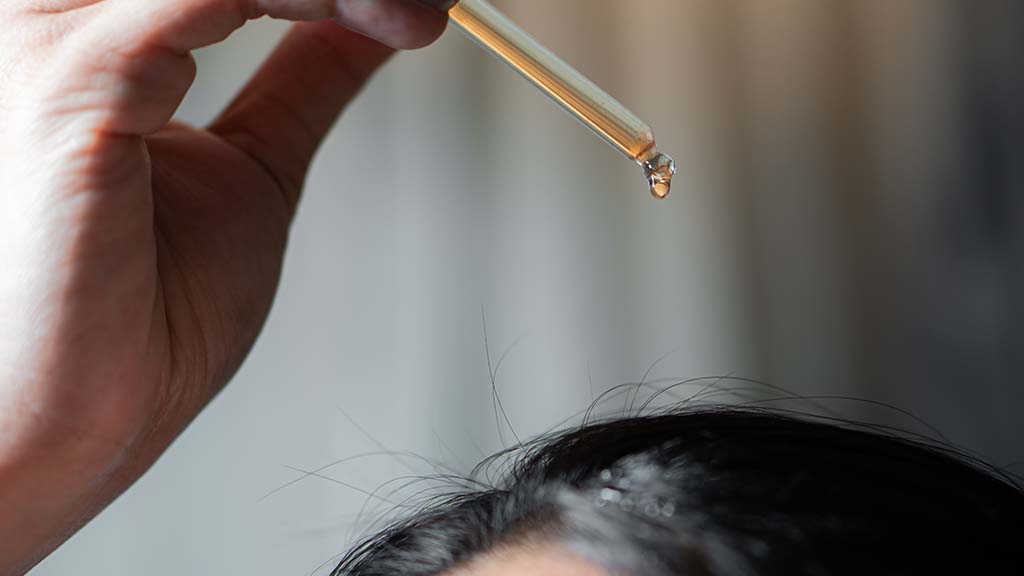
The oil produced naturally by your scalp and the slippery, oily coating from silicone-based shampoos and conditioners can also cause hair shedding on your hairpiece. This oily film acts as a moisturizer, making your hair smoother, but it also loosens the knots at the base and leads to hairpiece shedding.
Pro tips:
- Use wig shampoos and conditioners for your hair system. Avoid regular shampoos and conditioners filled with harsh chemicals. They are detrimental to the health of your hair system and cause rapid hair shedding.
- Additionally, a spray-on leave-in conditioner prevents your roots from contacting any silicone ingredient.
- You can also use a scalp protector to decrease the oil your scalp produces.
- Use a knot-sealer for additional protection. Spray on the inside of mesh units to seal and protect the delicate knots. This will reduce the shedding on your hairpiece and extend the life of your hair system. You can also use a knot-sealer to seal tape tabs.
- Deep cleaning your scalp and using a scrub can remove the oils and product build-up from your pores, giving you a clean scalp for smooth application and adhesion.
5. Physical Force
Improper rough handling can cause hairpieces to shed. Depending on how much force you apply to your hairpiece, you may be causing the hair to shed. Aggressive or excessive brushing or pulling on the hair can lead to losing strands. Things like scratching your head, how you’re sleeping (the material of your pillow rubbing against the hair), wearing a tight hat, tying or braiding your hair tightly, being rough with tangles, or stretching the base can all weaken your hair and cause it to fall off. Sleeping with the hair system on can cause friction between the hair and the pillow, which can cause hair loss, especially if you have longer hair pieces.
Pro tips:
- Say no to hats. Avoid wearing a hat when you have a hairpiece on. Hats cause friction, which leads to hair shedding and can destroy your hairpiece.
- Invest in a silk pillowcase.
- Never comb your hair after a shower when it’s still wet.
- Avoid sleeping with a full cap wig or long hair hairpiece as this can cause your hair to tangle and shed.
- Be gentle when brushing or styling your hairpiece. Opt for wide-toothed combs to minimize breakage or use looped brushes for wigs.
- If you have long hair, use a silk cap to reduce friction and knotting and avoid hair loss.
6. Heat
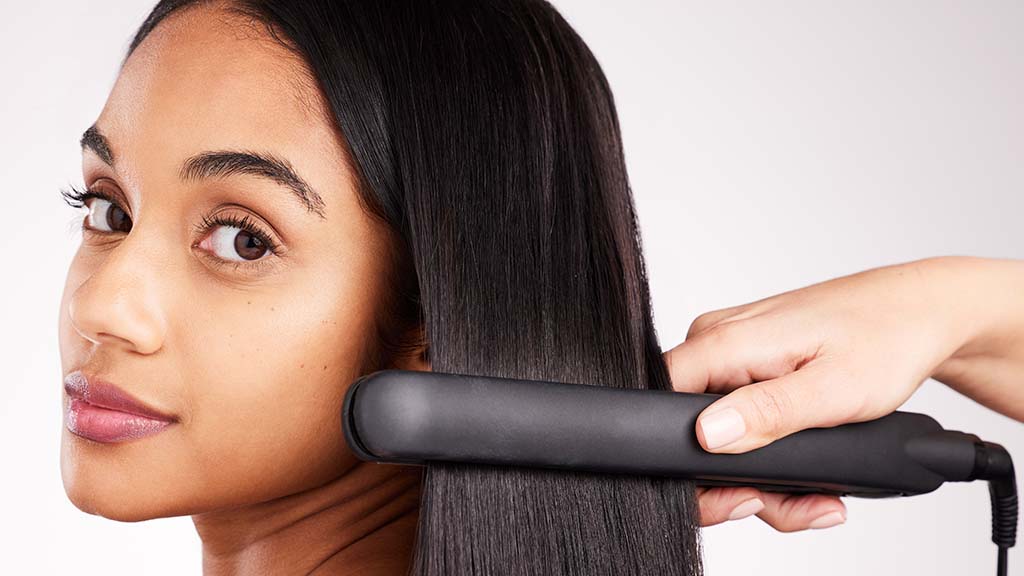
Avoid excess heat exposure, as even heat can also cause hair shedding. Heat breaks down the hydrogen bond, which makes up a third of your hair’s strength.
UV (ultraviolet) light can also cause your hair to fall. If your hair has prolonged exposure to the sun, the UV rays can damage your hair, whether by discoloration, thinning, frizziness, or causing split ends or dry and brittle strands. So, being away from the Sun or covering your hairpiece when you are on the beach will help prevent your hairpiece from shedding.
The weather or humidity level where you live will play a role, but other factors, such as blow drying your hair the wrong way, overdoing it, or not protecting your hair before heat use by applying heat protectant sprays, can also cause hair to overdry or become brittle and eventually shed.
Avoid hot water as it can dry out the hair strands, leading to shedding. Even saunas can weaken the bonds and cause hair shedding.
Pro tip:
- Air dry your hairpiece as much as possible, or use the cold setting on your blow dryer.
- Always use heat-protection creams or sprays before using hot tools for styling your hair.
- Additionally, to maintain your hair's integrity, try to limit the frequency of heat styling and explore heatless styling options.
- Cover your hairpiece when you're outdoors to protect it from direct sunlight and pollution. Consider using a UV protectant spray to shield it from harmful rays.
- Use heat-free styling methods, especially during winter.
- Use lukewarm water instead of hot water to wash the hairpiece.
7. Chemicals
Like hydrogen bonds, sulfur bonds are crucial in maintaining hair's structure. These bonds can be influenced by various chemical treatments, such as perming, bleaching, relaxing, and coloring. If you've tried coloring or bleaching your hair at home, the chemicals can compromise the strength of the hair fibers, resulting in hair system shedding.
Pro tips:
- Avoid using these chemical agents on your hair to prevent hair shedding. But if you require it, you must accept that you will experience hair fall. However, getting a hair system professional stylist to do it will help reduce the damage as they use professional-grade products and know how to work with processed human hair pieces.
- Use products designed for chemically treated hair or products recommended for hair systems.
- Ask your hair replacement stylist how to maintain hair systems that have undergone chemical treatments.
8. Manufacturing
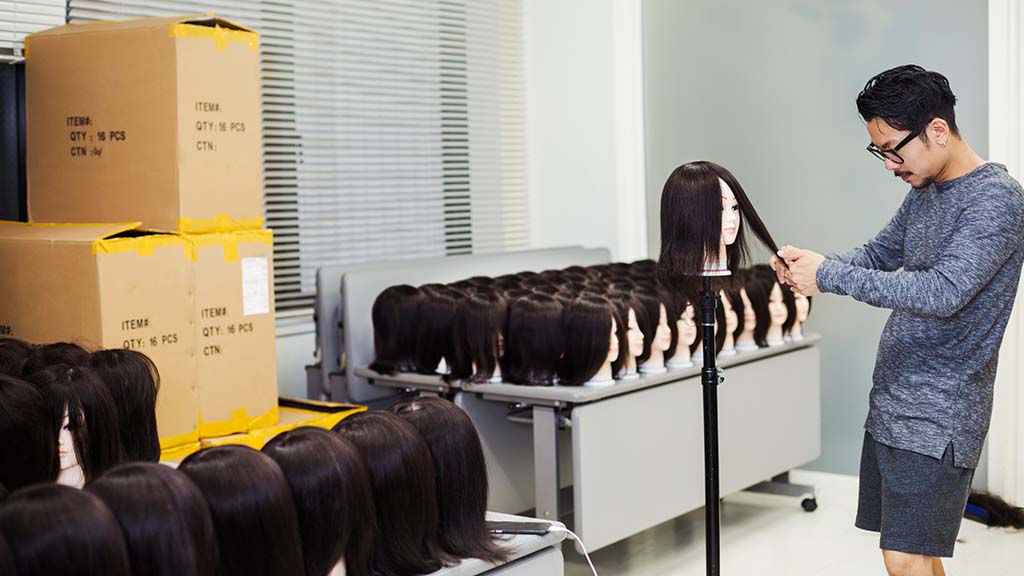
One primary reason for hair shedding is the quality of the hairpiece itself. Cheaper, low-quality products often use lower-grade materials and low-quality hair that is more prone to shedding. If you frequently experience shedding, it might be time to invest in a higher-quality hair system. Better materials will generally experience less shedding over time.
However, due to environmental and other factors, hair health has decreased, causing a general decline in raw or donor hair quality compared to a few years back. So choose hair manufacturers like Superhairpieces, which sources from the best hair donors, for authentic and high-quality hairpieces.
Having said so, even high-quality premium hairpieces experience hair shedding initially. So before you panic when you see your precious brand-new hair system shed, there are a few things to remember about new hair systems.
While manufacturing, some loose strands are left on the hairpiece. You may notice these falling and think your hairpiece is shedding, but it isn’t. It is expected to notice some loose strands, especially within the first week or until the second wash.
However, if more than 50 strands fall off from a hand stroke to the hair system or bald spots appear within the first month, and you notice knots coming out, then the hair system may be defective because the factory has not tied the knots tight enough or done them incorrectly.
In that case, you can send it back for inspection as it is usually under warranty for the first month. We will then check it thoroughly, and if it is indeed a factory or manufacturing defect, we will give you another hairpiece. Until then, ensure you have a spare piece handy.
Pro tips:
- Always keep 1-2 spare hairpieces for situations like these.
- Invest in high-quality hairpieces made from human hair.
- Be gentle with your hairpiece and mindful of the styling products you use on them.
9. Hair System Shedding in Winter

Just like with bio hair, seasonal hairpiece shedding is quite natural, too. Cold weather and indoor heating can cause dryness, leading to increased shedding. Additionally, using woolen caps, scarves, coats, jackets, etc., causes more hair tangling and matting, adding to hair-shedding woes.
The cold and dry weather can also lead to a dry scalp, causing itchiness and discomfort. Itching can also be due to new hair growth on the perimeter of your balding area on the crown. Monofilament bases tend to cause itching if not maintained well. However, when your scalp itches, remember that the hair on the toupee is not growing out of your scalp, so scratching it vigorously will loosen the knots and cause hair shedding.
Pro tips:
- When the scalp itches, it's vital not to scratch but to tap the area gently. Keep tapping, and the itching should cease.
- When you tap on lace hair systems, the hair may grow through the lace base, which is good because it will not feel itchy and will integrate with the system.
- Consider wearing a silk scarf or cotton bandana when outside to prevent tangles caused by winter hats and coats.
- Use moisturizing sprays or leave-in conditioners designed for hairpieces to keep the strands hydrated. This prevents dryness and brittleness that can contribute to shedding.
10. Lifespan of the Hair System
Are you overusing your hair system past its mentioned lifespan? The first step is to accept the lifespan of your hair system. They are not permanent units and can not last for a lifetime. Depending on your chosen base, you will need to purchase a few systems each year. At Superhairpieces, we provide high-quality hair systems that, when maintained well, can last a few extra days or weeks. However, you will eventually start noticing hair shedding on your hair system when it is nearing the end of its lifespan.
Pro tip:
- When purchasing your human hair system, check its lifespan and notice when the hair starts shedding. If the shedding is towards the end of its lifespan, you know it's time for a change; if not, check your usage and maintenance to be sure you are not causing the hair to fall with over-styling.
- Buy an extra hairpiece of the same unit just to be safe in case of earlier hair shedding.
11. Choose A Hair System With Longer-Lasting Knot Methods
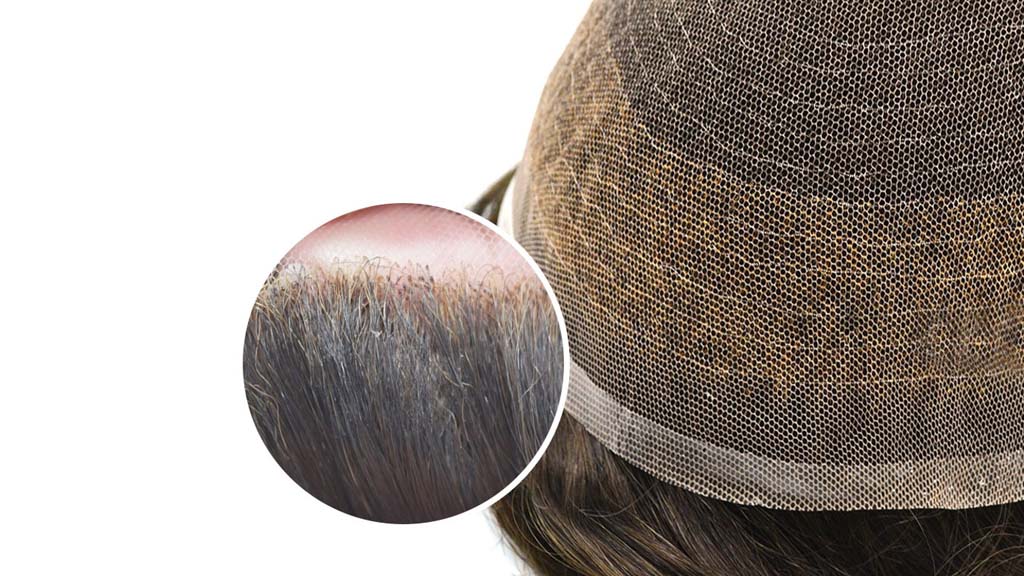
Hair systems come with different knotting techniques to attach the hair to the base of the hair system. The type of knotting used on the unit determines how natural the hair will look on the unit or how durable it will be. Some standard knotting techniques are:
- V-loop: The hair strand is hooked in and out of the base in a V-shape without being tied. This gives a natural look but sheds easily.
- Single-split knot: This is usually done with a few strands of hair knotted on the system once. The smaller knots are almost invisible, making them natural-looking.
- Injected hair: The hair roots are angled to make it appear as though they are naturally growing from the hair system, hiding the knots from view.
- Double-split knot: a few strands of hair are knotted on the system, but instead of looping once, the worker loops it twice. This knot is one of the most durable but not the most natural-looking.
Pro tip:
In the hair system industry, there is always a trade-off between natural-looking units and durable units. If you know you want a natural-looking unit and can maintain it well, choose a v-loop or single split knot hairpiece. If you want more durability and don’t mind compromising on the natural look, go for double-knotted hairpieces.
- V-loop: The hair strand is hooked in and out of the base in a V-shape without being tied. This gives a natural look but sheds easily.
- Single-split knot: This is usually done with a few strands of hair knotted on the system once. The smaller knots are almost invisible, making them natural-looking.
- Injected hair: The hair roots are angled to make it appear as though they are naturally growing from the hair system, hiding the knots from view.
- Double-split knot: a few strands of hair are knotted on the system, but instead of looping once, the worker loops it twice. This knot is one of the most durable but not the most natural-looking.
12. Active Lifestyle
If you have an active lifestyle, go to the gym regularly, run, etc., you will sweat. If you do not wash your hairpiece regularly, sweat and product buildup can weaken the hair and cause shedding.
Even biking and wearing helmets can cause hair shedding. While the friction will not make your hair system slip off, it can always negatively impact the hair strands.
Pro tip:
- It is suggested to wash your toupee every 2 to 3 days, depending on how much you sweat, the base you use, and the products you use on the men’s hair system.
- If you wear a lace unit, you can pat your hair unit dry with a towel to remove excess sweat.
- Remember to let your hair air dry after washing.
- Do not try to wring or squeeze the water out of the hair system.
- Protect your hair system from hair shedding and matting with a silk scarf or cotton bandana beneath the helmet.
13. Improper Attachment And Removal Of Adhesives
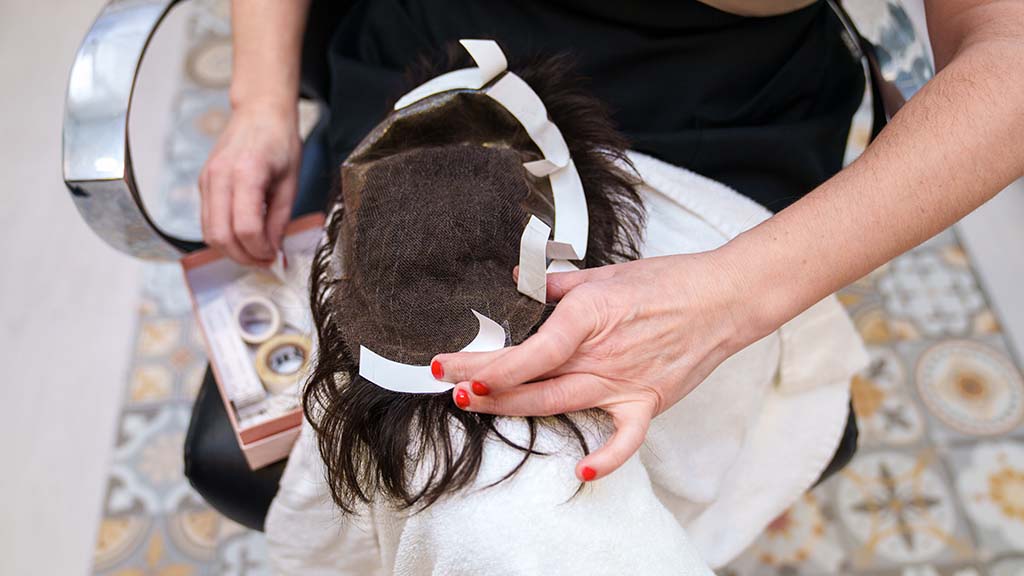
Improper use of adhesives or improper attachment and cleaning of adhesives, especially for lace-base systems, can cause hair to get stuck in the wig glue or wig tape and break, causing the knots to get spoilt and further hair shedding.
Pro tip:
- Ensuring all the glue and adhesive have been removed will minimize hair shedding.
- Use the proper type of adhesive according to your hair system base.
- Be extremely careful to avoid hair getting in the way during adhesive attachment and removal.
14. Improper Care and Maintenance
Excessive washing and styling of hairpieces can damage them and lead to shedding. Storing your hairpiece incorrectly can cause it to become tangled or matted. Additionally, skipping maintenance can harm the unit, as buildup from products like wax and other styling agents can accumulate, affecting the hair's health.
Pro tip:
- To minimize shedding, use a wide-toothed comb for detangling. Start from the ends and work your way up to the base of the wig. This is especially important for long hairpieces.
- Wash your hair system regularly, depending on your usage and lifestyle, but don't wash it daily.
- Go easy on the styling and use of excess products.
- Never skip maintenance.
- Store your hairpiece on a mannequin head or a wig stand when not in use. If you need to keep it in a box, ensure it’s completely dry and tang-free first.
15. Regular Wear and Tear
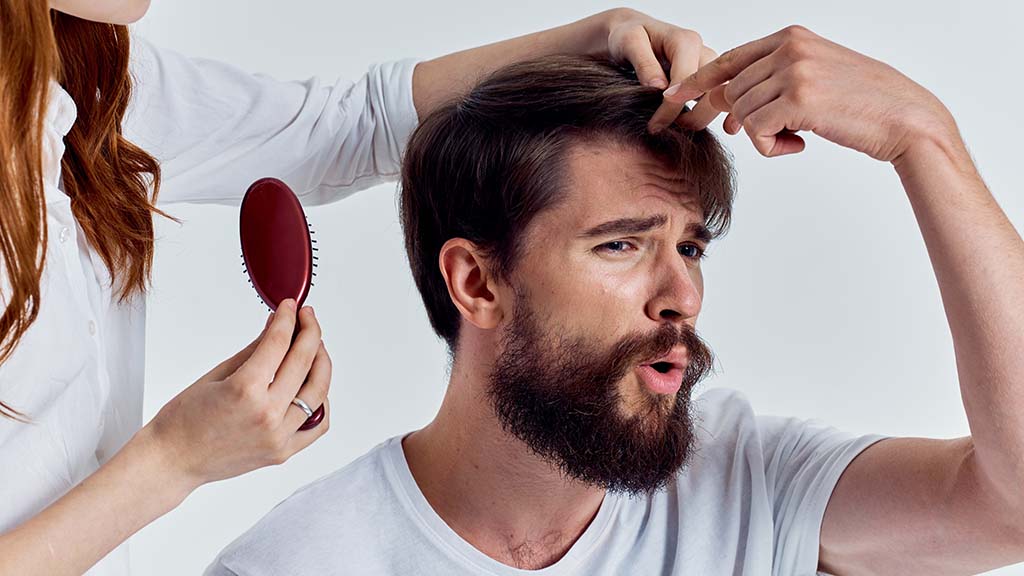
Like anything else, wear and tear can lead to shedding over time. Natural movement, friction, and daily activities can contribute to this issue.
Pro tip:
- Rotate your hairpieces occasionally to distribute wear evenly. This practice can prolong the life of each piece.
16. Tight Hairstyles
Just like with natural hair, wearing your hairpiece hairstyle too tightly can cause strain on the hair fibers and lead to shedding.
Pro tip:
- Opt for looser hairstyles to maintain the integrity of your hair system.
17. Repeating Patterns
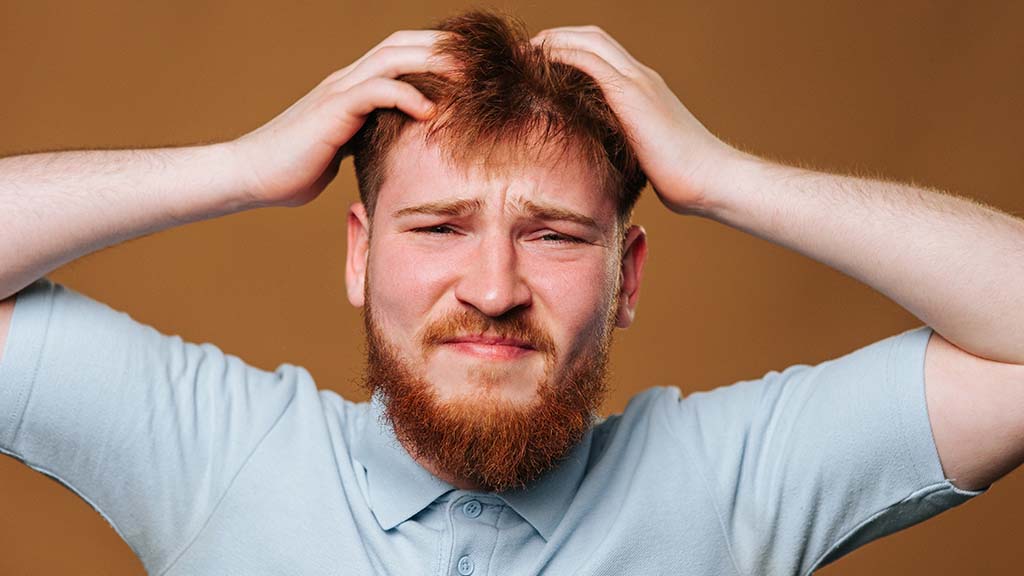
If you keep getting bald spots in a particular area on all the hair systems you use, you must analyze what you are doing wrong. Are you scratching the hair in a specific area, or what are you doing in that spot that causes shedding only there? In most such cases, it is not a defective hairpiece but the wearer's wrong usage pattern.
Pro tip:
- Never scratch the hair system.
- Don’t pick and prod on the hair system.
- Remember, the hair is not growing out of your scalp, so it will take some getting used to
Hair system shedding can be frustrating, but with proper care, maintenance, and a thoughtful approach to handling and styling your hairpiece, you can keep it looking as good as new. Invest in high-quality hair systems from a trusted brand like Superhairpieces to ensure realistic and aesthetically pleasing results.
Embrace your unique style, and enjoy every moment with your fabulous hairpiece. Don’t let hair shedding hold you back!
 Likes
Likes



 USD
USD












